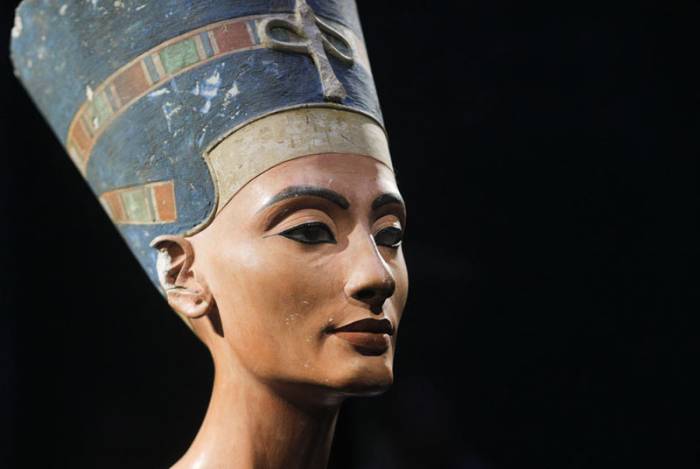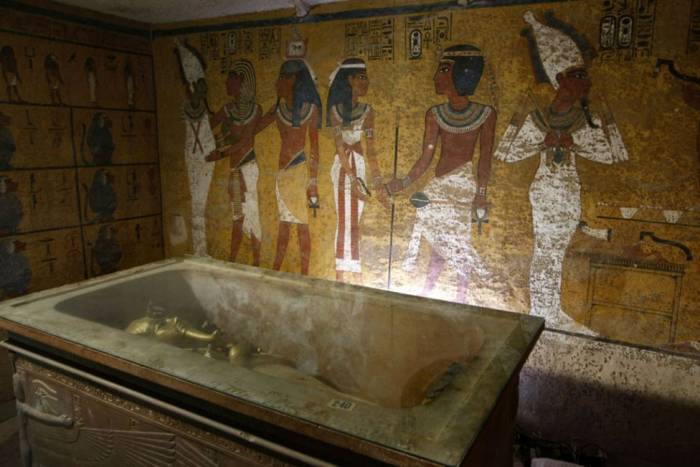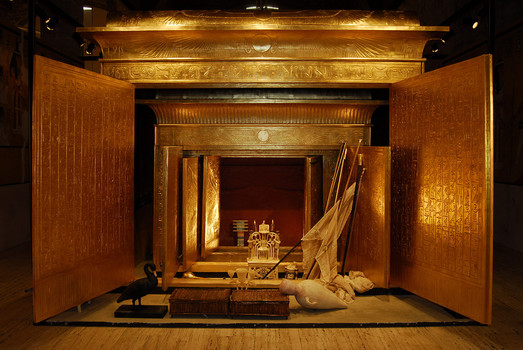
source
Nefertiti, famous for her beauty, was the wife of Ancient Egyptian Pharaoh Akhenaten during one of the richest period in Ancient Egyptian history. The couple was responsible for a religious revolution in Egypt; they only worshipped one god, Aten, rather than multiple gods. Some scholars think that Nefertiti ruled briefly as pharaoh after her Akhenaten’s death and right before the accession of King Tutankhamun. Some also speculate that Tutankhamun was her son. While his remains were discovered in 1922, no trace of the famed queen has been found. But archaeologists have come up with a theory on where they might find her.
Hiding In Plain Sight
British archaeologist, Nicholas Reeves, believes that Nefertiti may be hiding in the most obvious place: King Tutankhamun’s tomb. The interesting theory stems from an analysis of high-resolution images published online last year by Factum Arte, a Madrid-based art restoration specialist who helped create a facsimile of King Tut’s burial chamber in Luxor. In the scans, Reeves spotted cracks in the walls that could lead to hidden doorways lay behind the walls.
“The implications are extraordinary, for, if digital appearance translates into physical reality, it seems we are now faced not merely with the prospect of a new, Tutankhamun-era storeroom to the west; to the north (there) appears to be signaled a continuation of tomb KV 62 (Tutankhamun’s tomb), and within these uncharted depths an earlier royal interment — that of Nefertiti herself,” he says. “I have been testing the evidence ever since, looking for indications that what I thought I was seeing was, in fact, not there. But the more I looked, the more information I found that I seemed to be looking at something pretty real.”

{adinserter CNP5}
An Ancient Mystery
Tutankhamun’s resting place is one of the most intact Egyptian tomb ever found; nearly 2,000 objects were found and it took archaeologists nine years to catalogue them all. The tomb has always confused historians since it is much smaller than other Egyptian king’s tombs. Dr. Reeves believes that this is because it was not built for a king but rather a queen – specifically Queen Nefertiti. He also thinks that upon Tutankhamun’s young death at 17 years old, it was converted into his tomb.

The Puzzle Is Not Solved Yet
Many are skeptical of Reeve’s claim, but the new theory is exciting to think about. It is hard to test the theory since the site is too sensitive to for examination. Archaeologists may be able to look through the tomb walls using seismic X-ray technology, but even if they find a hidden portal, it will still take years to further excavate the site.

SEE ALSO: Ancient Egyptian Treasures Are About To Be Unveiled.






